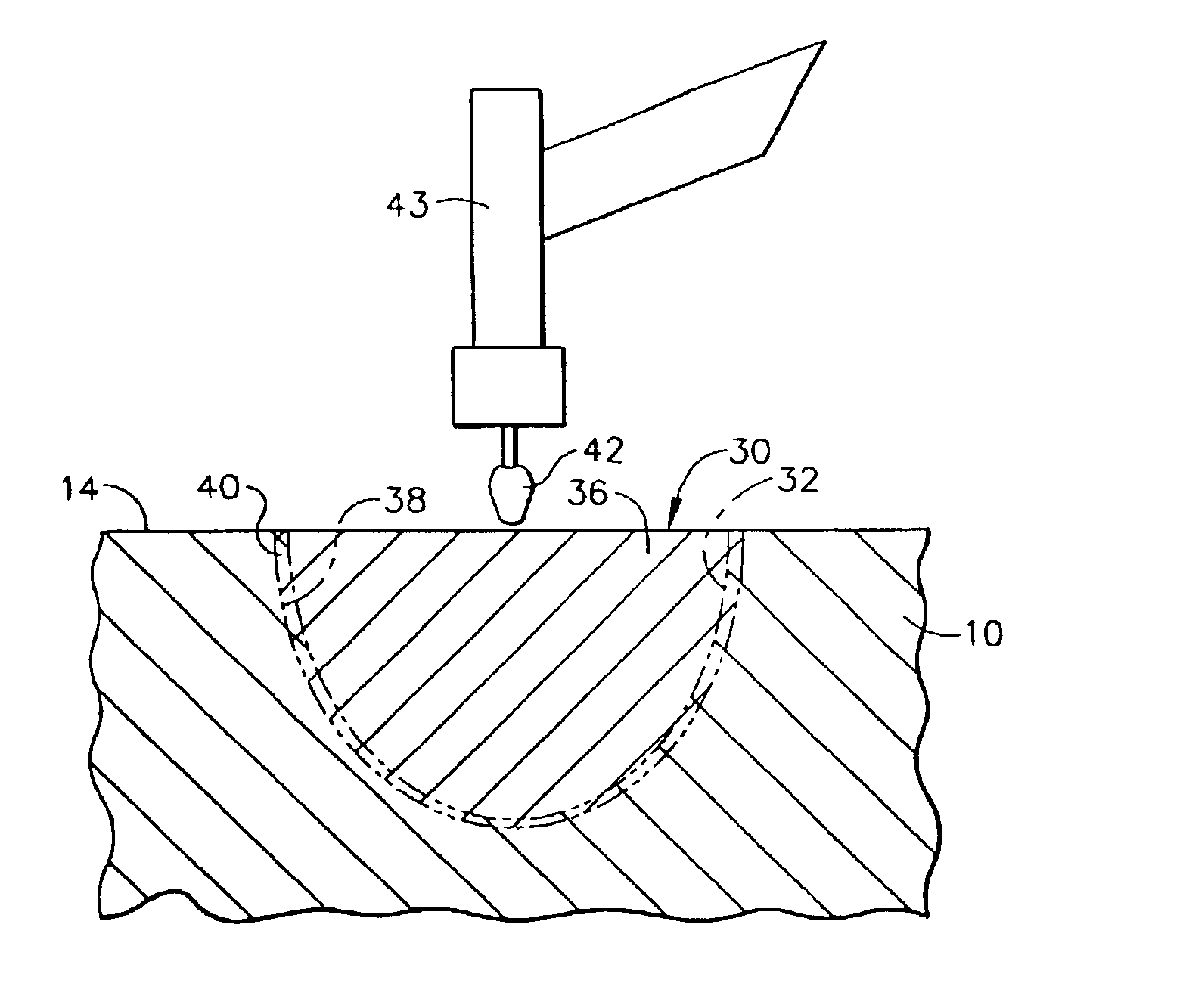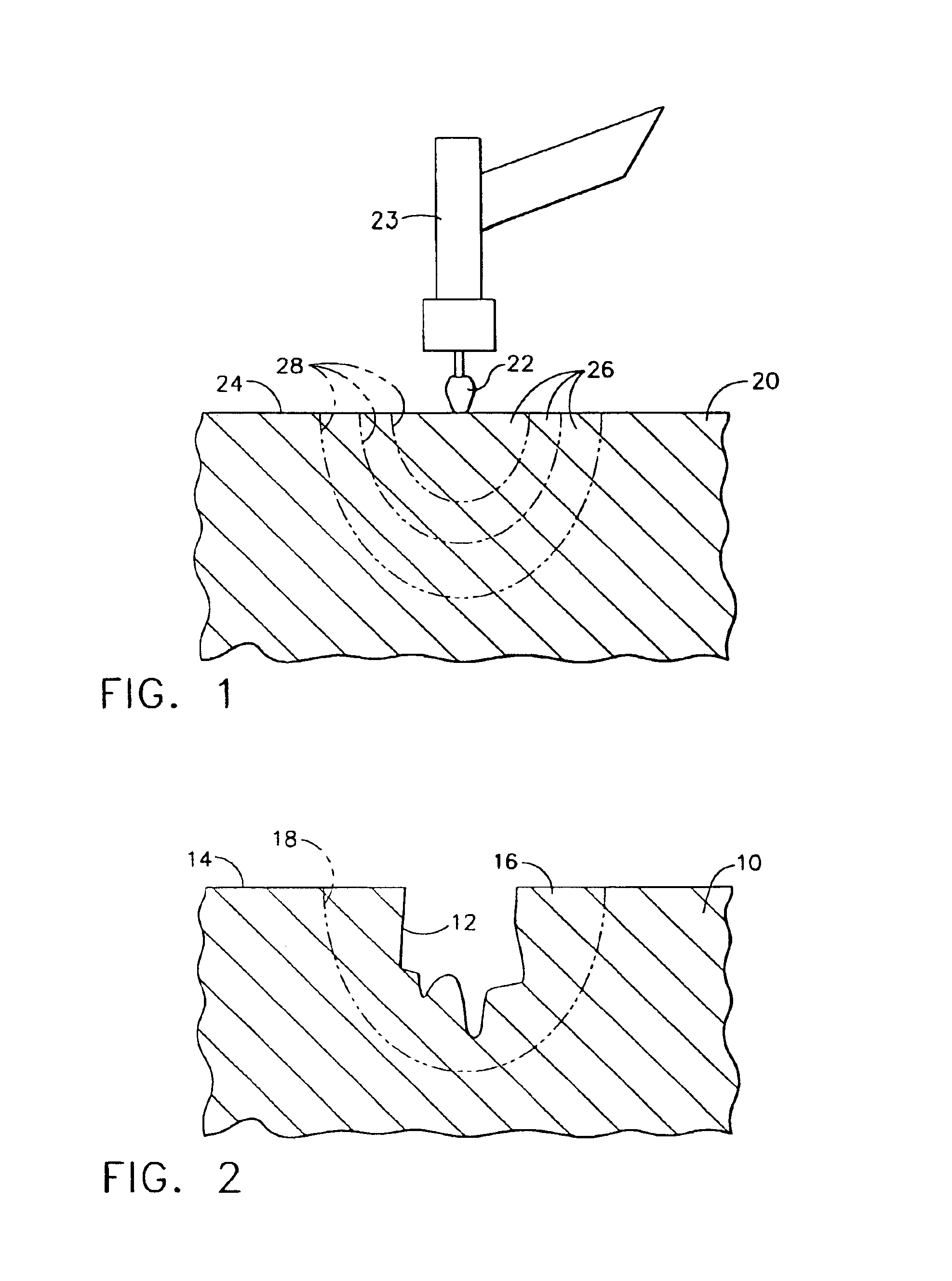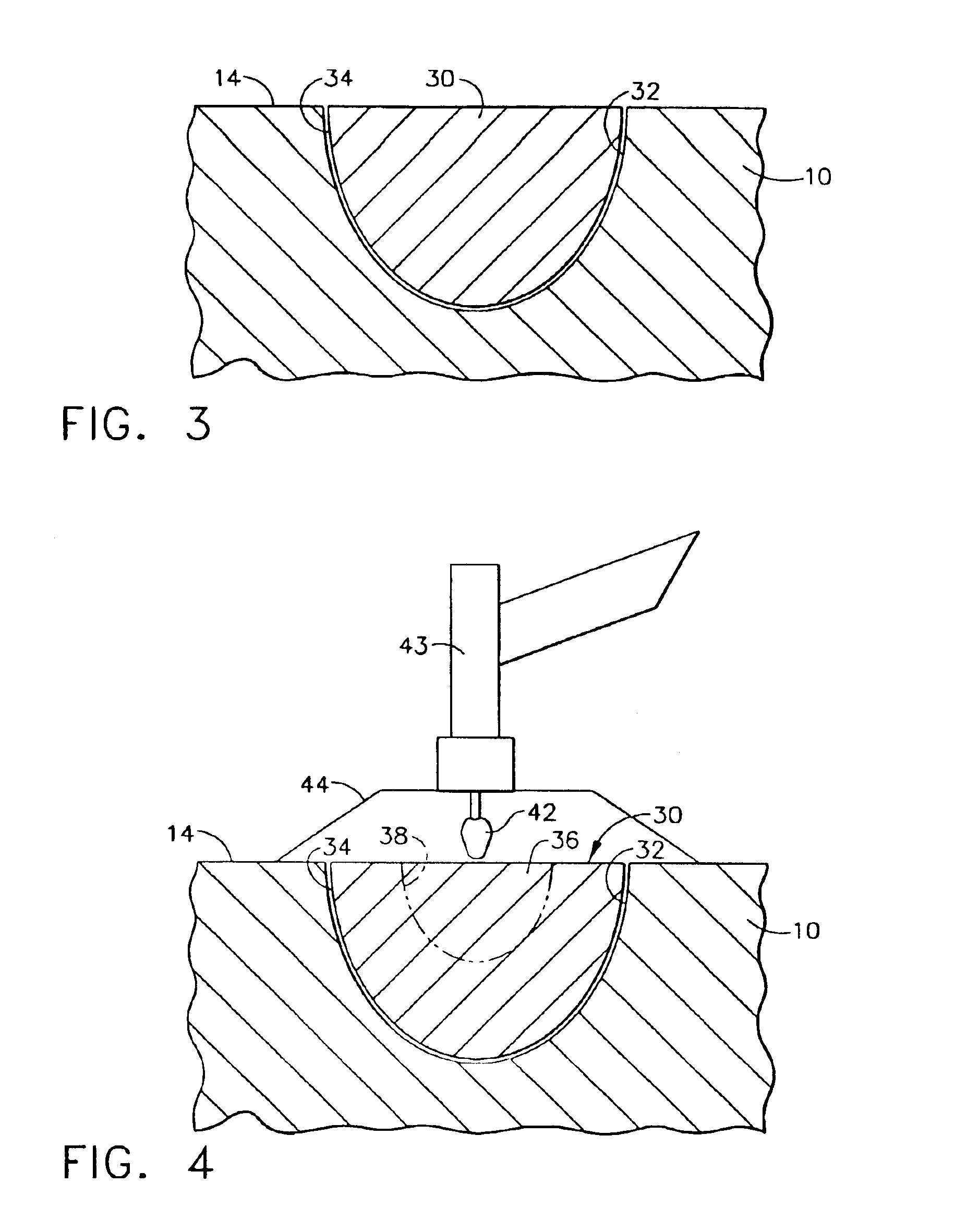Method of weld repairing a component and component repaired thereby
a technology of metal alloys and components, applied in the direction of manufacturing tools, solvents, transportation and packaging, etc., can solve the problems of linear defects, point defects, ceramic inclusions, pores, etc., and achieve the effect of reducing the risk of cracking
- Summary
- Abstract
- Description
- Claims
- Application Information
AI Technical Summary
Benefits of technology
Problems solved by technology
Method used
Image
Examples
Embodiment Construction
[0015]FIGS. 1 through 5 represent a series of steps carried out to repair a component 10 having a surface defect 12, as represented by FIG. 2. The component 10 may be formed of a variety of metal alloys, including those that are relatively difficult to weld, such as nickel, cobalt and iron-based superalloys used to form cast or forged components of gas turbine engines. If the component 10 is a casting, the defect 12 will typically be a point defect, such as a ceramic inclusion, pore, etc., though the defect 12 could instead be a linear defect.
[0016]Representing a first step of this invention, FIG. 1 shows a surface 24 of a metal alloy body 20 being heated with a torch 22 produced by a TIG welder 23, such that a weld melt pool 26 has developed. As would be expected, the melt pool 26 develops over time along a weld melt front 28 that propagates radially outward and downward through the body 20 from a point nearest the torch 22. The final size and shape of the weld melt pool 26 coincid...
PUM
| Property | Measurement | Unit |
|---|---|---|
| Time | aaaaa | aaaaa |
| Thickness | aaaaa | aaaaa |
| Size | aaaaa | aaaaa |
Abstract
Description
Claims
Application Information
 Login to View More
Login to View More - R&D
- Intellectual Property
- Life Sciences
- Materials
- Tech Scout
- Unparalleled Data Quality
- Higher Quality Content
- 60% Fewer Hallucinations
Browse by: Latest US Patents, China's latest patents, Technical Efficacy Thesaurus, Application Domain, Technology Topic, Popular Technical Reports.
© 2025 PatSnap. All rights reserved.Legal|Privacy policy|Modern Slavery Act Transparency Statement|Sitemap|About US| Contact US: help@patsnap.com



